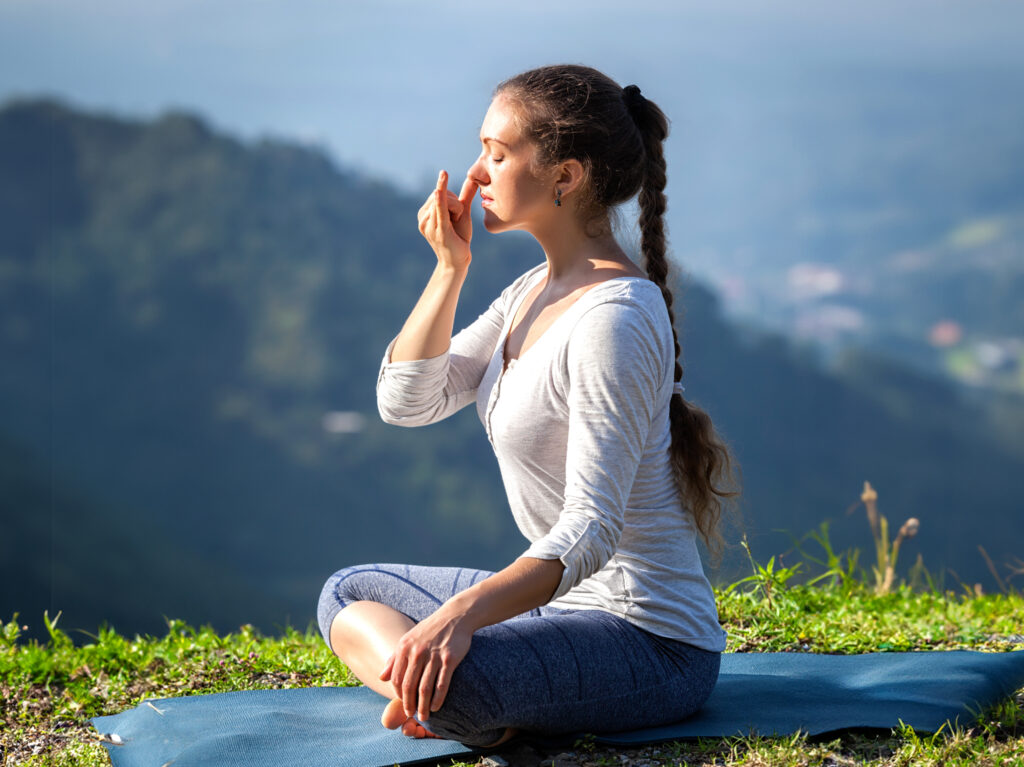Pranayama, a term derived from Sanskrit, is a fundamental practice in the realm of yoga, meditation, and holistic wellness. Often translated as “extension of the life force” or “breath control,” pranayama is a set of breathing techniques designed to bring about physical, mental, and spiritual benefits. The practice of pranayama is often associated with a state of mindfulness, spiritual awakening, and inner peace.
Objectives of Pranayama
In the grand scheme of yogic philosophy, pranayama aims to control and regulate the breath, allowing us to tap into our vital energy or “prana.” This practice is geared towards:
1. Purifying our Energy Channels: Pranayama helps clear away the “rubbish” or obstacles within our bodies, ensuring the free flow of prana through our energy channels or “nadis.”
2. Achieving Mental Clarity: By calming the mind, pranayama prepares us for deep meditation, fostering greater awareness.
3. Physical Health and Wellness: Regular pranayama practice can improve the quality of our breath and, by extension, our overall health.
Understanding the Types of Vayus
In the context of Pranayama, it’s essential to understand the concept of “Vayus.” Vayus are the different forms of prana or life force energy that flow within us. They manage various bodily functions and have distinct directional movements.
1. Prana Vayu – This energy is responsible for taking in, absorbing, and making use of what we need. It operates around our heart and lungs, helping us to breathe and take in life force.
2. Apana Vayu – This energy directs downward and outward movements in our body. It’s like the force that helps us eliminate waste and assists in processes related to our lower abdomen and pelvic area.
3. Samana Vayu – This energy is in charge of digesting and assimilating nutrients from our food. It works primarily in our abdominal region, ensuring the body properly processes what we consume.
4. Udana Vayu – This energy governs growth and upward movements within us. It’s particularly active in our throat and head regions, aiding in processes like speech and mental development.
5. Vyana Vayu – This energy serves as a distributor, spreading the energy derived from food and breath throughout our entire body. It ensures that all body parts receive the necessary energy to function effectively.
Different Types of Breathing in Pranayama
Pranayama, the ancient practice of controlled breathing, encompasses various techniques, each with its unique way of influencing our breath. Here’s a breakdown of some common types:
1. Puraka: This is the first step, where we focus on inhaling deeply and fully, allowing the breath to fill our lungs.
2. Rechaka: In this phase, we concentrate on exhaling slowly and completely, letting go of the breath in a controlled manner.
3. Antara Kumbhaka: After inhalation, we hold the breath within, pausing for a moment before exhaling. This retention allows for a deeper connection with the breath and the body.
4. Bahya Kumbhaka: Following exhalation, we experience a brief suspension of breath, holding the emptiness before the next inhalation. This moment of stillness can foster a sense of calm and awareness.
These different stages of pranayama offer a pathway to explore and enhance our relationship with breath, promoting relaxation, concentration, and overall well-being.
Diving into Pranayama Techniques
Pranayama entails different techniques, each with its unique benefits and processes. Let’s explore some of them:
1. Bhramari Pranayama
Also known as “Humming Bee Breath,” Bhramari Pranayama involves making a humming sound at the back of the throat during practice. This technique is perfect for calming a buzzing mind and is highly beneficial for those dealing with hypertension.
2. Kapalbhati Pranayama
Kapalbhati, meaning “Skull-Shining Breath,” is a cleansing technique that involves forceful exhalation. This technique detoxifies the body, clears energy channels, and invigorates the circulatory and neural systems.
3. Bhastrika Pranayama
Also known as “Bellows Breath,” Bhastrika Pranayama involves vigorous inhalation and exhalation. This technique helps boost energy levels and is perfect for stimulating digestion.
4.Nadi Shodhan Pranayama
Nadi Shodhan, or “Alternate Nostril Breathing,” balances both hemispheres of the brain, fostering mental harmony. This technique is excellent for enhancing concentration and calming the mind.
The Benefits of Pranayama

Pranayama is more than just a series of breathing exercises; it’s a path to holistic wellness and inner peace. Here are some of its benefits:
- Enhances Prana: Pranayama increases the quality and quantity of prana within us, consequently boosting our energy levels.
- Clears Energy Channels: Through these techniques, we can cleanse our nadis or energy channels, ensuring a smooth and steady flow of prana.
- Promotes Mental Well-being: Regular practice of pranayama fosters mental strength, positivity, and calmness.
- Boosts Physical Health: Pranayama improves our respiratory health, enhances our immune system, and benefits our overall physical well-being.
The Power of Conscious Breathing
Pranayama is more than just controlling our breath; it’s about harnessing the power of conscious breathing. By controlling our breath, we control our minds and, by extension, our lives. Regular practice of pranayama can bring about a profound transformation in our physical health, mental clarity, and spiritual awakening.
Conclusion
Pranayama is a journey to holistic wellness, inner peace, and spiritual awakening. Its benefits go beyond physical health, extending to mental well-being and spiritual growth. By incorporating pranayama into our daily routine, we can harness the power of conscious breathing and step towards a healthier, happier life.
Note: Although pranayama has numerous health benefits, it’s essential to seek guidance from a trained yoga instructor to ensure that the techniques are performed correctly. If you have any pre-existing medical conditions, consult with your healthcare provider before beginning a pranayama practice.
“Inhale the future, exhale the past. Through pranayama, embrace the power of conscious breathing, and awaken to a new dawn of wellness and inner peace.”



